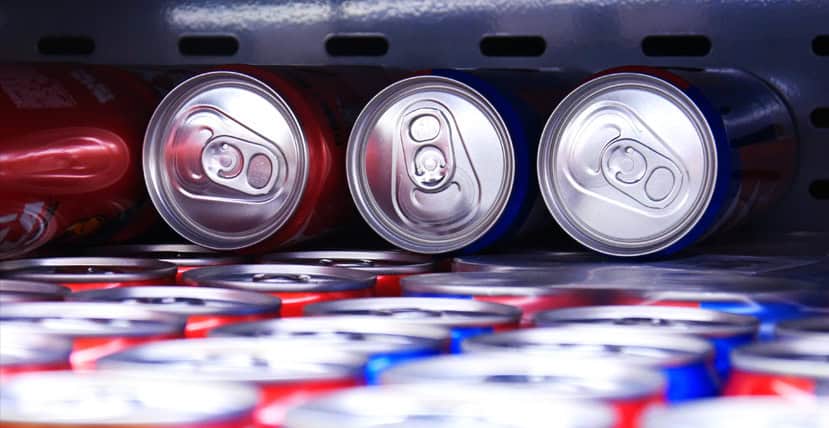By Eric Buresh
The first that many companies hear about patent litigation filed by a non-practicing entity (“NPE”) is when they receive a complaint initiating litigation. And the chances of being on the receiving end of NPE litigation are trending upward.
According to a detailed report from patent acquisition company RPX Corp., the first quarter of 2022 marked the second-highest first quarter for NPE activity since 2015.
The upward trend may be continuing in view of BlackBerry’s announcement in January that it divested nearly all of its non-core legacy patents to an NPE for $600 million, and assignments indicating other recent large portfolio acquisitions by NPEs such as Dominion Harbor.
If a company is sued by an NPE, there are several considerations from the outset that should be weighed in developing a litigation and resolution strategy:
Understand the Plaintiff
NPEs can be roughly divided into two groups.
The first group of NPEs is the high-volume, quick-settlement plaintiffs. By and large, these NPEs are behind the recent uptick in patent litigation. For example, patent monetization company IP Edge was responsible for adding around 144 of the 525 defendants added to patent litigation in the first quarter of 2022. NPEs in this group are prolific filers, but generally pursue early settlements, often even before a responsive pleading has been filed.
The second group of NPEs target fewer companies, are backed by litigation funders, and are prepared to pursue cases toward higher value resolutions or judgments. The volume of filings by NPEs in this group has been generally flat over the past few years. However, for defendants, these cases often hold greater risk because the NPE is prepared to drive cases forward and hold out for higher settlements.
With this understanding, as soon as a complaint is received, a defendant should learn as much about the plaintiff as possible. Most named plaintiff NPEs are simply shell companies for the actual NPE. So, it is important to find who is behind the litigation. Look at assignment records for the plaintiff’s patents, not just those being asserted in litigation. Search the federal court PACER system to learn where and how often the plaintiff has filed patent litigation, and how long it takes for these cases to be resolved. A simple Google search will often reveal the plaintiff’s reputation for serial patent litigation and may also provide clues to the true NPE.
Using this initial research, the defendant can understand the plaintiff’s level of aggressiveness and the likelihood of early resolution, and categorize the NPE accordingly. This information is essential to forming a responsive strategy.
Understand the Court
Approximately half of all NPE-filed patent litigation in the U.S. is filed in the United States District Courts for the Eastern and Western Districts of Texas.
For years, the Eastern District of Texas was a major hub of NPE filing and patent litigation in general, thanks in large part to the court’s rules of procedure for patent cases. These rules set forth a quick timeline for patent litigation, creating a so-called “rocket docket.”
The Supreme Court’s 2017 decision in TC Heartland v. Kraft Foods, 137 S. Ct. 1514, narrowing the definition of “residence” of a company for purposes of establishing venue for patent litigation, led to a decrease in NPE litigation in the Eastern District of Texas. However, it remains a popular jurisdiction among NPE plaintiffs.
In the last three years, the Waco division of the Western District of Texas has quickly become another popular venue for NPE plaintiffs, largely due to the appointment of Judge Alan Albright in 2018 and his adoption of patent local rules that are very similar to those in the Eastern District. The RPX report, for example, noted Judge Albright’s “restrictive posture toward various defensive motions” and “idiosyncratic approach” to motions to transfer.
Notably, in these two Texas districts, the rules drive patent litigation to trial quickly, often faster than an Inter Partes review—one common tactic for defendants to challenge the validity of patents asserted against them—before the U.S. Patent and Trademark Office.
One strategy to protect a company from NPE litigation is to stay out or move out of these districts, as some companies reportedly have done. If there is an option for where to locate facilities, such as offices or even server banks, consider avoiding these districts.
If that is not a practical possibility, when a suit is filed by an NPE in one of these jurisdictions, consider filing a motion to transfer venue to another district where, for example, your company’s headquarters is located. Additionally, in the Western District of Texas, companies may have a physical presence in Austin, Texas. Judge Albright draws cases filed in Waco, Texas, where NPEs file the vast majority of Western District cases. A company with an Austin presence should consider requesting an intra-district transfer from Waco to Austin. If transferred, it will result in a different judge hearing the case and different patent local rules being applied.
If your case will be going forward in the Eastern or the Waco division of the Western District of Texas, it is important to understand upfront that there will be challenges. For example, dispositive motions are statistically less likely to be successful. While they can be part of the litigation strategy, they should not be a centerpiece. It is smart to expect that the case will proceed to trial and prepare the case for the long haul from early on. Part of that long-term strategy should include working with counsel who are experienced with litigation in the jurisdiction and have demonstrated success at trial in these venues.
Understand your Strategy
In the early days (i.e., before the passage of the America Invents Act in 2012), many defendants applied a scorched earth litigation approach to any and all patent litigation. This strategy often included extensive discovery and motion practice often with little to show for the resources expended.
NPEs have evolved in the years since, with strategic responses to the AIA as well as the embrace of litigation funding. As a result, effective defense strategies have become more refined as well. From the outset, companies should consider the end game including prospects for both settlement and trial. Rather than resource-wasting motion practice in jurisdictions where such motions are likely to have little effect, a company should work with its counsel early on to identify the key weaknesses in the plaintiff’s case and understand the issues that are most likely to drive resolution. At the same time, companies that face the more serious cases should immediately begin preparing a solid trial story that will then be developed through discovery.
Even when facing a high-volume NPE, one camp of defendants—wary of becoming a “corporate ATM” for NPEs—have taken a hard line against settling with NPEs. Newegg, for example, became well-known for its zero-tolerance policy in the mid-2010s. The Newegg approach, while effective at reducing the NPE threat over the long term, requires both the stomach to fight litigation all the way to trial and the consistency to follow this strategy over the course of multiple cases. The strategy requires at least a few years of consistent defense of NPE cases. In addition, while it is common for joint defense groups to form among multiple defendants facing similar claims from the same NPE, this type of defendant will often need to go it alone while most other defendants settle.
Given recent trends, we are in another expansion of NPE litigation with far more investment behind this uptick than prior waves. Although it might not be possible to keep out of the NPE crosshairs entirely, asking the right questions to develop an early and comprehensive strategy will help protect your company.
Eric Buresh is a founding shareholder of Erise.


